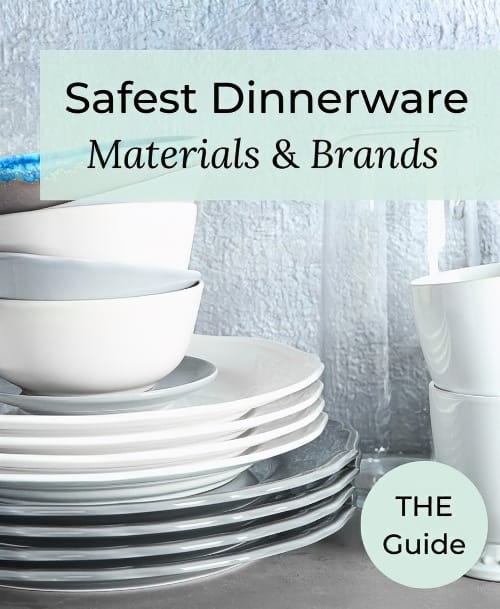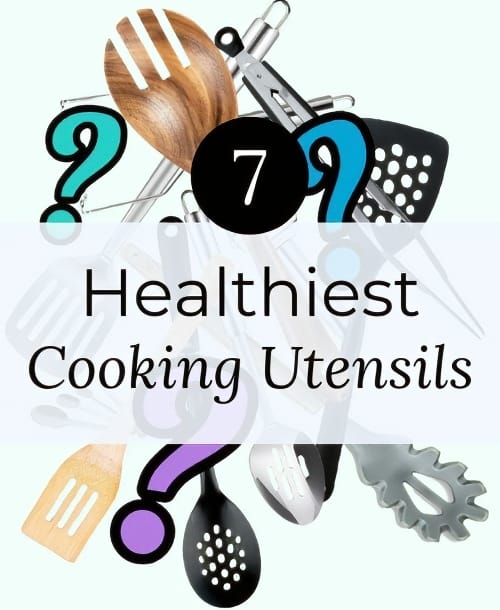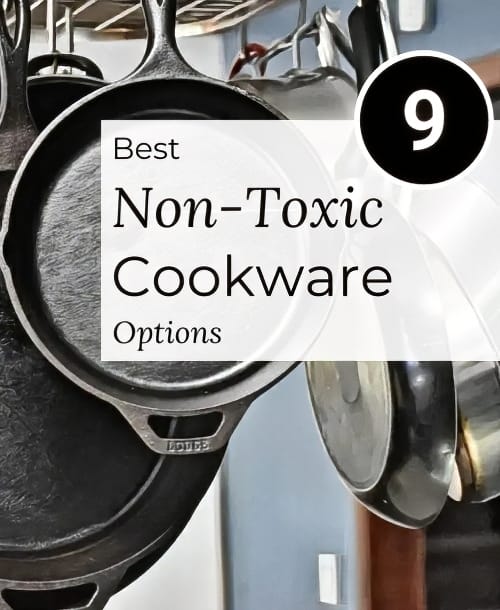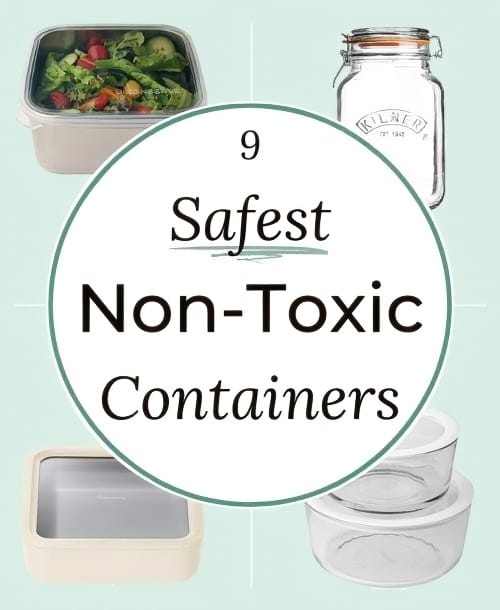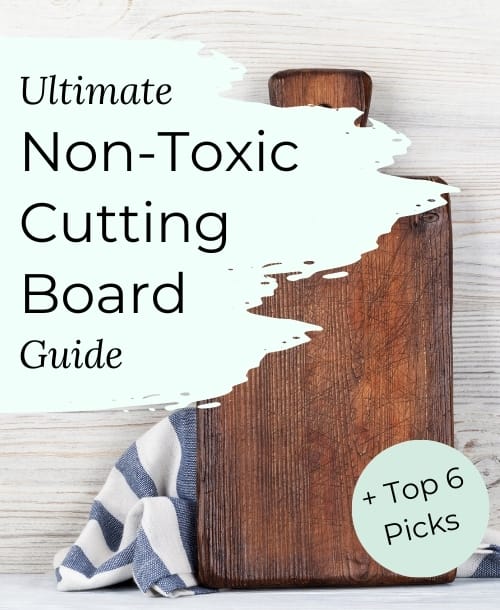
Is your cutting board sabotaging your family’s health? It might be. Many cutting boards can leach harmful chemicals or trap bacteria, turning healthy meals into hidden danger zones.
That’s why non-toxic cutting boards are crucial for your health, food safety, and the environment. But with so many options, how do you know which ones are truly safe?
That’s where we come in. In this guide, I break down the criteria of the healthiest cutting boards. We’ll compare the top materials in safety, eco-friendliness, ease of cleaning, and more. These include natural wood, rubber, epicurean, silicone, bamboo, plastic, and glass.
Then, I’ll offer practical advice based on experience and expert opinions for cutting board maintenance and top brand picks.
Let’s dive in!
Medically-reviewed by Dr. Ahmad Alsayes, MBBS
What Makes a Cutting Board Non-Toxic? Two Key Criteria
- Free from harmful chemicals like BPAs, phthalates, triclosan, and melamine. These chemicals are common in some plastic, “antibacterial,” and bamboo boards.
- **Minimizes cross-contamination risk to prevent foodborne illnesses.
**Proper cleaning is essential for any board material. But, some offer natural antibacterial benefits while others are non-porous and easy to sanitize:
Naturally antibacterial pick:
- Solid wood (unglued or formaldehyde-free glue): A classic choice offering natural antimicrobial properties.
Hygienic and easy-to-clean picks (non-porous):
- Greenguard-certified Epicurean: Plant-based, lightweight, and dishwasher-safe.
- Natural rubber: Newcomer with potentially antimicrobial effects, knife protection, and a non-slip grip.
- FDA-approved, food-grade silicone: Dishwasher-safe and lightweight.
- Glass and stoneware (marble, ceramic, granite): Naturally non-porous and dishwasher-safe.
Avoid:
- Plastic and “antibacterial” boards
- Melamine bamboo boards
Beyond safety, knife-friendliness and sustainability of materials are also crucial. While glass and stone excel in hygiene, they dull knives and break easily, needing replacement.
So, next, we’ll compare each material in terms of safety, durability, eco-impact, and practicality.
Cutting Board Materials: Safety, Durability, & Sustainability – Compared

Wooden Cutting Boards (Safe)
Wood cutting boards are naturally antibacterial, with a grain structure that absorbs and suffocates bacteria within 3-10 minutes. They also protect knives from dulling better than plastic, glass, or stoneware boards.
However, choosing the right wood matters:
- Avoid: Softwoods (lack durability) and open-grained hardwoods (prone to moisture damage).
- Top picks: Maple, walnut, teak, and cherry. They offer balanced durability, moisture resistance, antibacterial properties, and knife protection.
I prefer solid, one-piece boards with non-toxic finishes for safety and longevity. Avoid bonded boards unless they use formaldehyde-free glues like Ziruma or John Boos. And focus on brands that source wood locally and sustainably to reduce environmental impact.
Beware of upkeep: Regardless of hardwood type, hand-washing and regular oiling are required – more on that below.
Plastic Cutting Boards (Avoid)
Plastic cutting boards are affordable, lightweight, and easy to maintain. Unlike wood, they’re non-porous, making them dishwasher-safe. But, like Tupperware, some plastic boards can leach phthalates into food, risking endocrine disruption. Examples include PVC plastics.
A 2023 study found that even BPA- and phthalate-free boards can expose you to 7.4 – 50.7 grams of microplastics a year. These particles also harm marine life, leading to reduced feeding and fertility issues.
Also, plastic becomes difficult to sanitize when scratched. You’ll notice discoloration in worn-out plastic boards, no matter how hard you clean them. That’s from bacteria accumulation, as plastic’s non-porous nature allows germs to multiply. This can lead to cross-contamination.
Avoid plastic cutting boards labeled odor-resistant or antibacterial:
Composite Cutting Boards (Avoid bamboo; Epicurean is safe if certified)
Composite boards are made from wood or bamboo fibers and resins, compressed under high heat and pressure.
They offer several benefits over traditional wood cutting boards:
- Lower maintenance: Wood-like, non-porous surface that does not demand oiling and hand washing.
- Sustainability: Some options use recycled materials or faster-growing bamboo.
The two main composite cutting boards are:
- Melamine bamboo cutting boards: Often contain melamine-formaldehyde resin, raising concerns about leaching and kidney damage. Some versions are melamine-free, but they’re rare. Bamboo’s hard, less-porous surface may also trap bacteria, increasing cross-contamination risk.
- Epicurean cutting boards: While Epicurean is generally non-toxic, ensure it is Greenguard-certified. These boards are made from a paper composite with formaldehyde resin. Richlite, a company behind Epicurean, follows a production process that destroys 99.9-100% of VOCs, with formaldehyde emissions well below EPA standards. They’re also NSF and FSC-certified for safety and sustainability. Other companies, however, may not be. So always check for Greenguard certifications to ensure safety.
Glass and Stone (Safe, but not practical)
These options are non-toxic and naturally stain and bacteria-resistant without demanding oil upkeep. They’re non-porous, dishwasher-safe, and free from all glues.
But, due to their hardness and fragility, I discourage using them for cutting board use. Glass and stone dull knife blades fast, and their fragility makes them less sustainable.
I recommend using glass and stone for baking tasks like decorating cookies or for serving snacks.
Emerging Options: Rubber and Silicone (Safe)
- Natural rubber cutting boards: Offers a non-toxic, low-maintenance option with a firm grip on wet surfaces. Natural rubber, derived from tree sap, has a lower carbon footprint than plastic, making it eco-friendly. It prevents knife dulling like wood but requires no conditioning upkeep. And rubber’s non-porous surface makes sanitization easy. But, be cautious of deep cuts (avoid heavy chopping) and ensure the board is 100% natural rubber. Avoid if you’re allergic to latex.
- Food-grade silicone: Silicone, a non-toxic material derived from silicon, offers a safe and eco-friendly plastic alternative. Its inert, non-porous nature makes it easy to clean and dishwasher-safe. Ensure you select “food-grade” silicone cutting boards that are FDA-approved. Avoid using it as a chopping board due to its limitations (similar to rubber). While not as widely recyclable as plastic, its durability and inert nature make it a sustainable choice.
Maintenance: Keeping Your Cutting Board Safe and Long-Lasting
The porous nature of wooden cutting boards demands proper cleaning, drying, and oiling. This conditioning prevents drying and cracking while repelling excess moisture, preserving durability and safety.
Cleaning your board:
- Hand wash both sides and the edges with warm water and mild soap – avoid harsh detergents.
- Rinse thoroughly – no soaking!
- Air dry completely upright to allow air circulation – moisture is the enemy.
Oiling and storing your board:
- Apply a thin layer of oil with a cloth or paper towel, covering all surfaces and edges.
- Let the oil soak in for several hours.
- Wipe off excess oil: The board should not feel greasy.
- Store vertically with good air circulation. Avoid storing near heat and water sources (sunlight, heaters, dishwashers, sinks).
- Repeat monthly.
Top non-toxic cutting board oils:
- Fractionated coconut oil: Serves as a durable mineral oil replacement, deeply absorbing into the wood grain. Ensure it’s fractionated coconut oil, as regular coconut oil (for cooking) turns rancid.
- Beeswax: Easy-applying and water-repellent choice that keeps wood moisturized and smelling nice. It helps repair minor scratches to keep the board looking new. But, it lacks the penetration of oils, demanding more frequent use. Heat can also degrade the wax’s integrity.
- Carnauba wax: Offers a durable finish that outlasts beeswax and oils. Carnauba forms a hard, glossy surface that repels scratching, moisture, and stains. But, it works best when blended with beeswax, as it can be too stiff and glossy by itself.
My favorite option is Clark’s 3-in-1 wax. It combines fractionated coconut oil for deep nourishment with beeswax and carnauba for surface protection.
My second choice is Caron & Doucet’s fractionated coconut oil solution for its ease of application.
Avoid these finishes:
- Linseed and walnut oils due to potential allergic reactions.
- Cooking oils such as olive, vegetable, and canola. They quickly turn rancid on cutting boards.
- Chemical-based wood stains like urethane and acrylic.
- **Unrefined mineral oil: Carcinogenic to humans and can leach into food.
**Note: Refined, food-grade mineral oil is safe, but the petroleum-free finishes above are more sustainable.
Tips for preventing cross-contamination:
- Wash your board with hot, soapy water immediately after use. Don’t let bacteria settle in!
- Hydrate and protect: Oil your board with beeswax, carnauba, or fractionated coconut oil once dry. This repels moisture and bacteria.
- Use a few boards: Dedicate one for raw meat and fish, another for cooked items, and a third for produce.
- Sand down heavily scarred wood boards for a smooth surface. This helps prevent excess moisture and germ buildup.
- Time to say goodbye: Once scratched, non-porous (or composite) boards like plastic, epicurean, glass, and bamboo shouldn’t be sanded. Replace them! Bacteria multiply in grooves, posing a health risk.
Top 6 Non-Toxic & Eco-Friendly Cutting Board Options
The following cutting boards come from brands that prioritize sustainable, non-toxic materials and sourcing:

1. PK Brown Woodworking Solid Maple Cutting Board: Handcrafted in upstate N.Y., USA, from a single chunk of locally sourced hard maple. 100% free from glues and chemical finishes. Various sizes are available, with the largest offering a 10” x 9” cutting area. The brand operates on 100% solar energy. Shop PK Brown.
2. Maple Landmark Solid Maple Cutting Board: Vermont-made solid maple boards; single-piece, locally sourced, and unfinished. Available in two sizes, the large provides a cutting area of 9.25” x 5.” Maple Landmark practices selective harvesting and repurposes wood scraps and packaging for sustainability. Shop Maple Landmark
3. Adirondack Kitchen Solid Cherry Cutting Board: Handmade in upstate N.Y. from cherry wood (single piece) with homemade beeswax and organic coconut oil finish. Non-toxic and available in two sizes, with the largest having a 12” x 7.25” cutting area. Cherry is perfect for protecting knives, but maple and walnut are also available for added durability. Shop Adirondack Kitchen.
4. Epicurean Kitchen Series Cutting Board: Made in the USA from Richlite – NSF, FSC, Greenguard-certified epicurean for safety and sustainability. Available in various sizes and styles, the most common option measuring 14.5” x 11.25”. Thin, lightweight, and dishwasher-safe for easy everyday use. Shop Epicurean.
5. NoTrax Sani-tuff 100% Natural Rubber Cutting Board: US-made from high-density natural rubber, certified by NSF International for health and safety. Available in several sizes and designs (including juice-grooved), the most common board measures 18” x 12” x 0.5”. Resurfaceable when scarred (along with the solid wood options above). Shop NoTrax.
6. Liflicon Food-Grade Silicone Cutting Board: Made from 100% food-grade, FDA-approved silicone. A 100% plastic-free cutting board offering similar cleaning ease with better knife protection. Non-toxic and available in multiple sizes and sets, with the large board measuring 14.6” x 10.4” x 0.2”. Shop Liflicon silicone.
Frequently Asked Questions
How do I choose a non-toxic cutting board?
1. Size and Use: Choose based on your cooking habits, with medium (12″x18″) for everyday tasks and larger (18″x24″) for extensive food prep.
2. Material Choices:
- Wood: Natural antibacterial properties, durability, and knife-friendliness. Opt for maple, walnut, cherry, or teak—regular hand washing & oiling are required.
- Silicone: Flexible, hygienic, and non-porous for easy sanitizing. Dishwasher-safe.
- Epicurean: Lightweight, heat-resistant, and dishwasher-safe. Look for Greenguard & NSF certifications.
- Natural Rubber: Antimicrobial, slip-resistant, and durable. Easy to clean, though hand washing is recommended.
- Glass/Stone: Hygienic and dishwasher-safe, but can dull knives and chip easily. Opt for tempered glass for improved durability.
3. Eco-Friendliness: Consider sustainable materials like FSC-certified wood or Epicurean and biodegradable rubber. Note the energy used during production and ease of breakage for glass and stone.
4. Cost vs. Durability: Natural wood boards have a higher initial cost but can last for years with proper care. Silicone is more affordable but may wear out faster. Epicurean and natural rubber offer mid-range pricing and durability.
What is the safest cutting board for raw meat?
Both wood and non-porous silicone and plastic cutting boards can be safe for raw meat. The key is thorough sanitization after each use to tackle any lingering bacteria. Ideally, commit a separate board for raw meat to avoid cross-contamination. Choose what fits your preferences. Wood is naturally antimicrobial, new or old; non-porous options are easier to disinfect unless deeply scratched.
Recap & Conclusion
Cutting board safety is simple: Choose materials free from harmful chemicals and prioritize boards that resist cross-contamination. Longevity and knife protection are also crucial.
Avoid materials with questionable safety, especially those prone to becoming unsafe when scratched… I.e., plastic.
Instead, pick safe cutting boards from all-natural materials. Wood and rubber, for example, ensure lasting safety, knife care, and sustainability.
Happy cuttin’!
P.S. Non-toxic cutting boards are only part of the equation; pairing them with the right cookware is crucial. So, explore the safest sets today in our ultimate healthy cookware guide!

Hi there! I'm Adam, author and founder of TGL. Since 2016, I've produced and sold non-toxic kitchenware throughout the US. Today, I'm using my passion and experience in sustainable product manufacturing to help families avoid unsafe reusable foodware. When I'm not writing, you'll find me hiking or camping throughout Appalachia!
Enjoyed this post? Share it with your friends!
Related Posts

